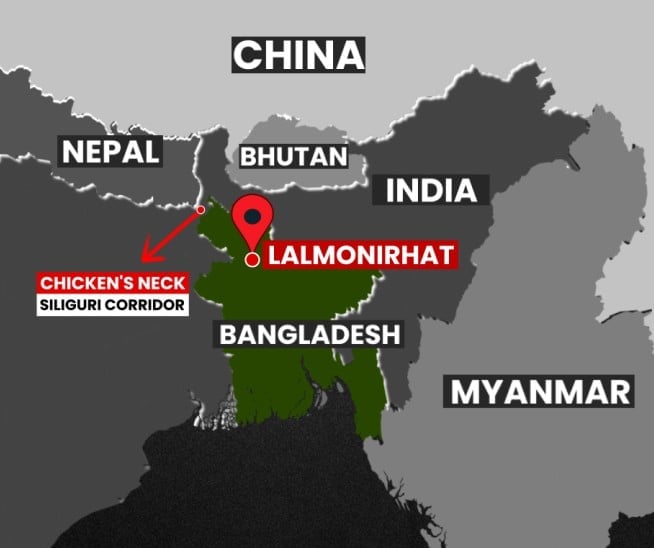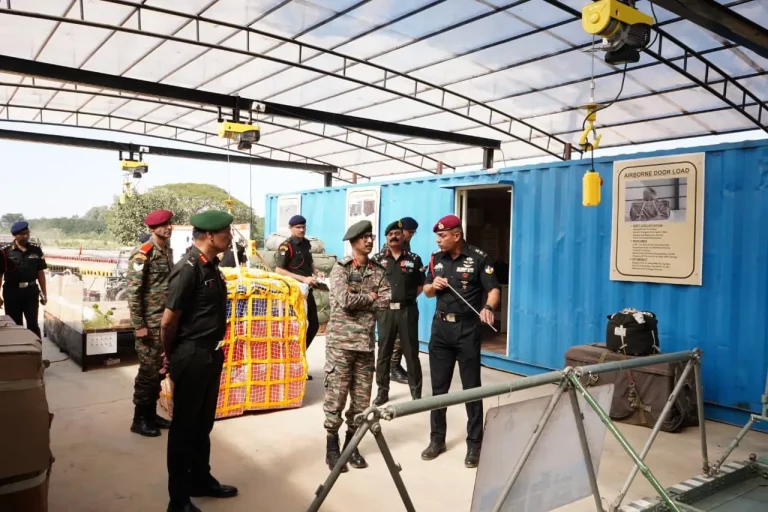China’s reported involvement in the revival of the Lalmonirhat airbase in northern Bangladesh has sparked significant strategic concerns in New Delhi. Situated just 135 kilometers from India’s crucial Siliguri Corridor and 12 to 15 kilometers from the Indian border, the airbase raises alarms due to its proximity to this vital land link that connects India to its northeastern states.
Originally constructed in 1931 and utilized by Allied forces during World War II, Lalmonirhat fell into disuse over the decades. However, the interim government of Mohammed Yunus has initiated a plan to reactivate several vintage airstrips for economic reasons. The situation has been complicated by a recent visit from Chinese officials and ongoing investments in the region, prompting fears that the airbase may serve dual civilian and military purposes.
This development dovetails with China’s broader strategy of enhancing military infrastructure along the Himalayan frontier. Since 2024, Beijing has upgraded several airbases near the Line of Actual Control (LAC), improving operational readiness with better facilities and drone capabilities. Indian defense experts caution that China’s approach to establishing “airbase clusters” enables quick troop deployment and sustained aerial presence in sensitive border areas.
According to Sriparna Pathak, a professor of China Studies at OP Jindal Global University, any military involvement by China at Lalmonirhat could facilitate monitoring of Indian troop movements through the Siliguri Corridor. This corridor has been closely watched since the 2017 Doklam standoff, which exposed vulnerabilities to Chinese maneuvers near the tri-junction of China, Bhutan, and India.
China’s growing footprint in Bangladesh extends beyond aviation. Chinese-backed companies are involved in various solar plants and industrial projects near Rangpur, with plans for a new satellite city that often operates with limited local participation. A journalist from Dhaka highlighted that many of these initiatives are managed entirely by Chinese personnel, igniting concerns regarding economic sovereignty and external influence in Bangladesh.
Strategic experts point to the timing of these developments. Kalpit Mankikar, a fellow at the Observer Research Foundation, suggests that the interim government’s shift may be more amenable to Chinese investments compared to the previous administration under Sheikh Hasina, thereby potentially realigning the region’s geopolitical landscape. He warns that this could lead to increased surveillance and influence directed against India.
Adding to the complexity, a Pakistani military-intelligence delegation reportedly visited northern Bangladesh prior to the Chinese officials’ arrival. Given Pakistan’s historical support for insurgent groups in India’s northeast, this rekindled trilateral relationship raises alarms within Indian security circles.
General Upendra Dwivedi, the Chief of Army Staff of India, has voiced concerns over the use of neighboring territories by hostile elements to target India, particularly in light of Pakistan’s legacy as a hub for terrorism. His remarks reflect a broader anxiety about how revived infrastructure might be exploited for cross-border subversion.
In response to these evolving threats, India has been enhancing key airbases, such as Ambala and Hasimara, while strengthening radar networks and cybersecurity systems. However, experts recognize a widening technological gap. China’s deployment of around 195 J-20 stealth fighters and recent advancements in AI-powered stealth platforms indicate a qualitative edge for the People’s Liberation Army Air Force, which currently surpasses India’s non-stealth fleet.
Geospatial researcher Damien Symon notes that China’s military strategies are not solely reactive but reflect aspirations for permanent forward deployments. The revival of Lalmonirhat, whether destined for civilian or military use, aligns with China’s broader initiative to establish a dense network of dual-use infrastructure throughout South Asia.
As India keeps a vigilant eye on developments in its vulnerable northeastern corridor, the proximity of Chinese-backed projects in Bangladesh presents not only a tactical threat but also a test of New Delhi’s capacity to navigate complex regional dynamics involving both immediate neighbors and major global powers.



















